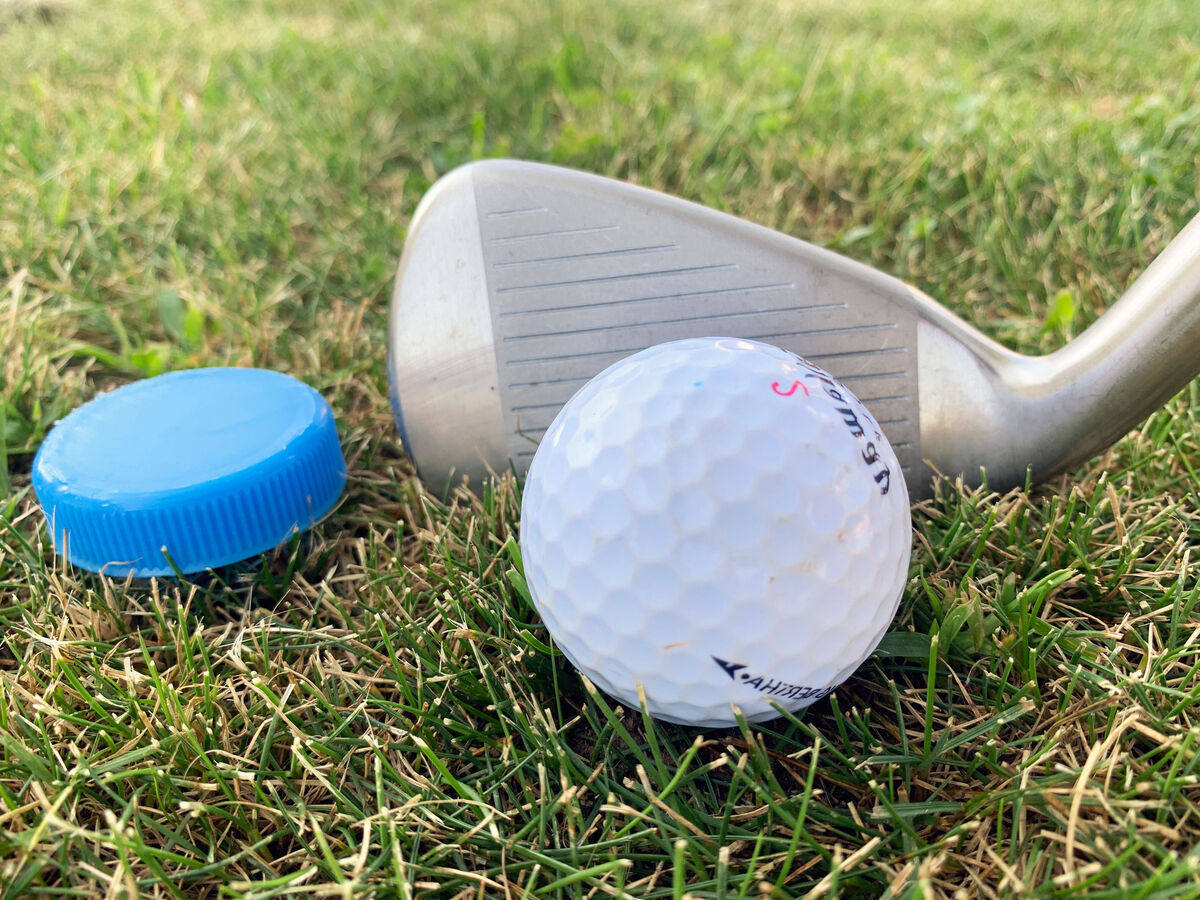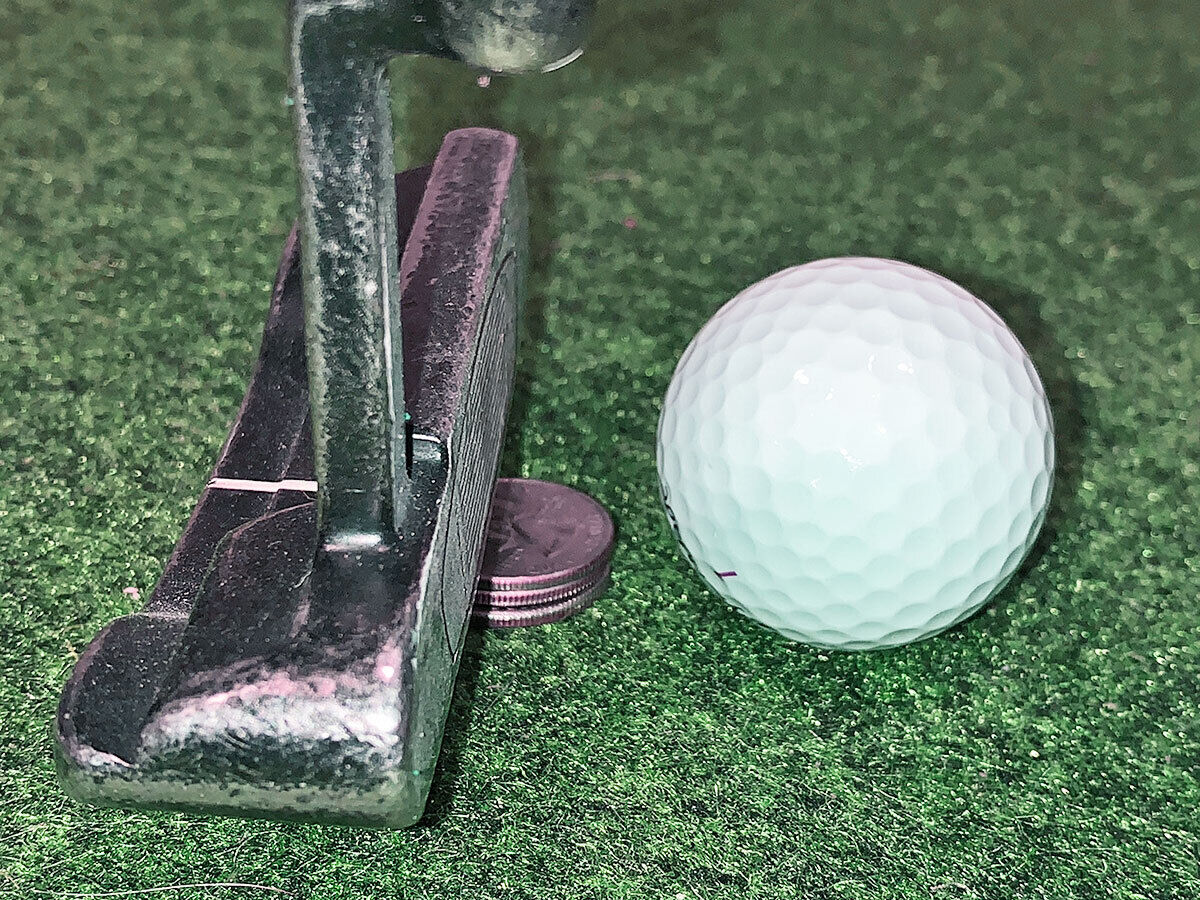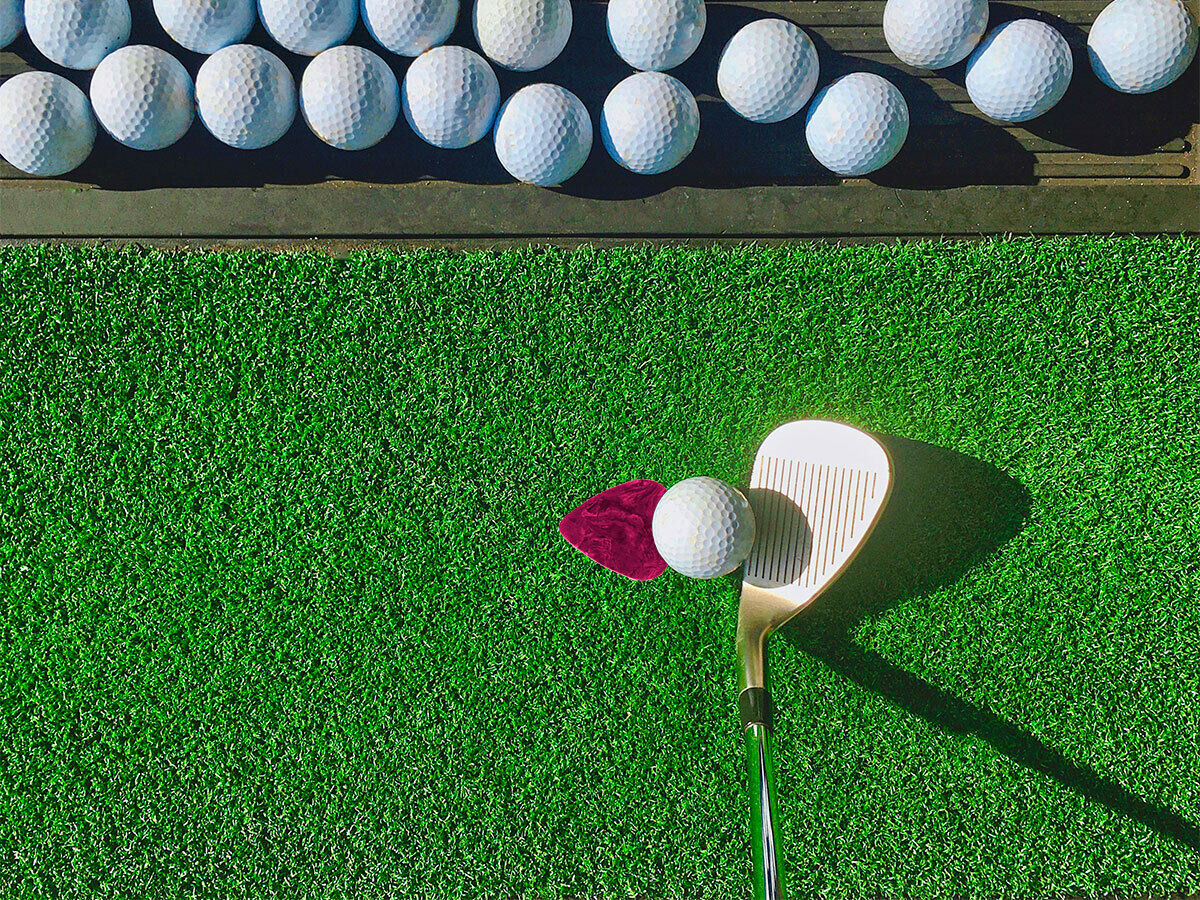7 Household Items That Can Make You a Better Golfer

Golfers will do anything to get an edge. We dump beaucoup bucks into any contraption that claims to cure our weakness of the week. What if I told you that you probably already have the perfect training aid at home, and it’s hiding in plain sight?
These seven household items double as excellent training aids to help you hone almost any golf skill. You probably already have most of these at home, and if you don’t, we promise none of these items will break the bank.
1. Dr. Scholl's Foot Spray

Use Dr. Scholl's spray to see your strike location
Dr. Scholl's: $4.97 | CHECK AMAZON
If you haven’t seen foot spray used as a golf training aid, you’ve been living under a rock. Perhaps the biggest factor in the quality of a golf shot is where you hit it on the club face. The best way to learn your strike tendencies, and more importantly, train a sweet-spot strike, is by using Dr. Scholls. Really.
First, make sure you avoid any version that claims to go on clear. We use the specific product linked above, and it provides a perfect coat. Apply a light layer to your club face every time you practice. Every shot you hit will leave a perfect imprint of where you struck it. You’ll learn if you have a toe-bias or heel-bias, and whether you tend to hit the ball high or low on the club face.
Use this feedback to focus on bringing your strike pattern closer to the sweet spot, and you’ll be hitting purer shots with more consistency in no time. At less than $5 a can, you’ll probably wonder why you ever practiced without Dr. Scholls in the first place.
2. Yardstick
Johnson Level & Tool: $4.21 | CHECK AMAZON
As golfers, we’re obsessed with every yard. That makes it even more symbolic that a yardstick can make us better golfers.
This putting drill is not easy, but it’s simple as can be and will absolutely translate to lower scores.
Set up with a ball on one end of the yardstick, and try to putt it off the other end.
That’s it.
Sounds easy, right? It’s not.
It’s more likely that the first few tries will roll off the side halfway down the yardstick. The next few will probably make it to the home stretch before fading off to the left or right. But as you improve your face angle at impact, you'll begin rolling ball after ball all the way off the end of the yardstick.
It’s a beautiful feeling, and one that, if you practice this drill regularly, will translate to more accurate putts on the golf course very quickly.

The Yardstick Putting Drill to Dominate Inside 10 Feet
3. Bottle Cap

Use a bottle cap to train sweet spot strikes
Now that you’ve used Dr. Scholl's to figure out whether you tend to miss on the toe or heel side, you need to figure out how to move that strike pattern to the sweet spot. A bottle cap, or the cap to a gallon of milk, is perhaps the best tool to help you do that. Allow me to explain.
Say you tend to hit shots off the heel, and maybe suffer, we hate to even say it, the occasional shank. Hey, it happens.
Place the bottle cap next to the ball just outside of the toe.
Now your goal is to hit the ball without touching the cap. If you hit it in shank territory, the toe of your club will send the cap flying. When you hit the center, the bottle cap will stay as still as a statue.
To correct a toe-side miss, move the cap just off the heel of the club.
4. Quarters

Putt with 3 quarters behind your ball for a perfect strike
Here’s a putting drill that only costs 75 cents.
Stack three quarters behind your ball at address during your putting practice. All you’re trying to do is make your normal putting stroke without hitting the quarters. This ensures you hit the right part of the ball when you strike putts, and will give you a more consistent roll.
If you hit the quarters, that means you’re hitting the putt too high on the putter face, which decreases loft and stymies your roll.
If you’ve ever stubbed a putt – trust me, it’s not a good feeling – this drill will make sure it never happens again.
5. Pool Noodle

Cut up a pool noodle to train your swing path
Pool Noodle: $1.69 | CHECK AMAZON
Pool noodles are cheap and they’re easy to cut up, so even if you don’t have one laying around your basement, you can set up this drill without too much hassle.
You’ve seen the expensive swing path training aids, with foam guides that create a runway for whatever path you’re trying to train. The foam goes flying if your swing path strays from your intended track. They’re good, don’t get us wrong, but with a pool noodle and a little creativity, you can make your own for a few bucks.
First, cut four six-inch or so lengths off the end of the pool noodle. Use tees (two tees per noodle) angled in the ground to hold them in place and set up your runway for whatever path you’re trying to create. You can build a runway to train an in-to-out path, an out-to-in path, or use all four sections of noodle to train a straight path.
The best part about this drill is you don’t even have to hit a ball, meaning you can do it in your own backyard. Just swinging through your runway will dial in your preferred path.
Helpful Hack
Use two tees in each section of noodle to get the best hold. The longer the tees, the better.
6. Guitar Pick

Use a guitar pick to improve your strike quality
D'Addario Accessories: $3.09 | CHECK AMAZON
Find a guitar pick, or buy 10 of them for three dollars on Amazon. Place one pick directly on the target side of your ball. Make a swing focusing solely on hitting the guitar pick with the bottom of your swing.
Just past the ball is a great spot for the bottom of your swing, and if you do this successfully, the sound of that oh-so-good-feeling ball-first contact will be music to your ears.
7. Felt Furniture Pads
Mr. Pen: $4.99 | CHECK AMAZON
I first saw this genius idea on Twitter, so thank you to whoever was creative enough to think of this and generous enough to share it.
You know those sticky little furniture pads that are designed to prevent scuffs and scratches on your floors? Well, you can also use them to train sweet-spot strikes with your putter.
Hitting putts off the toe or heel can have a serious impact on your distance control and your starting line. Since those elements are critical in determining if a putt drops or not, hitting the center is an important skill.
Stick those little dots on your putter face, straddling the sweet spot. Make sure there’s enough room between them that when you hit the middle, you don’t touch either pad, but not too much more than that.
Hit putts of all lengths with the pads on the putter. It won’t take long to figure out if you’re really hitting the center as often as you think, and to re-calibrate your strike to the sweet spot. Pay close attention to how your strike varies as the length of your putt varies. You might hit 5-footers off the center every time, but 25-footers could be another story.
Get Creative
We’re willing to bet you won’t have to leave the house to round up at least half of these items. You can also get creative and make a training aid out of almost any item you have laying around the house.
Anything that can either give you immediate feedback on your stroke, or train the pattern you’re seeking (whether it’s swing path, face strike location, ground contact, etc.) is fair game.
What other household items do you use as a training aid?